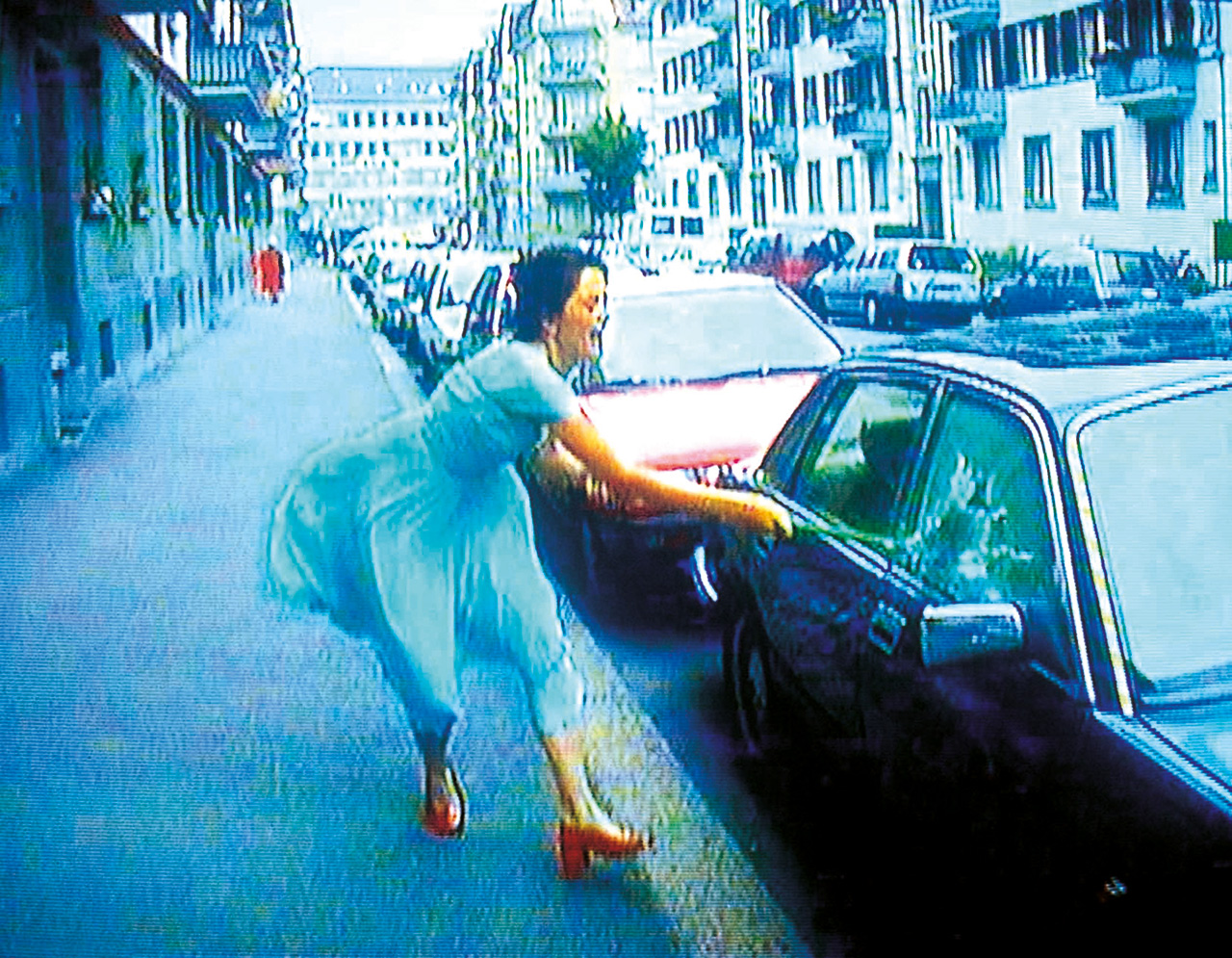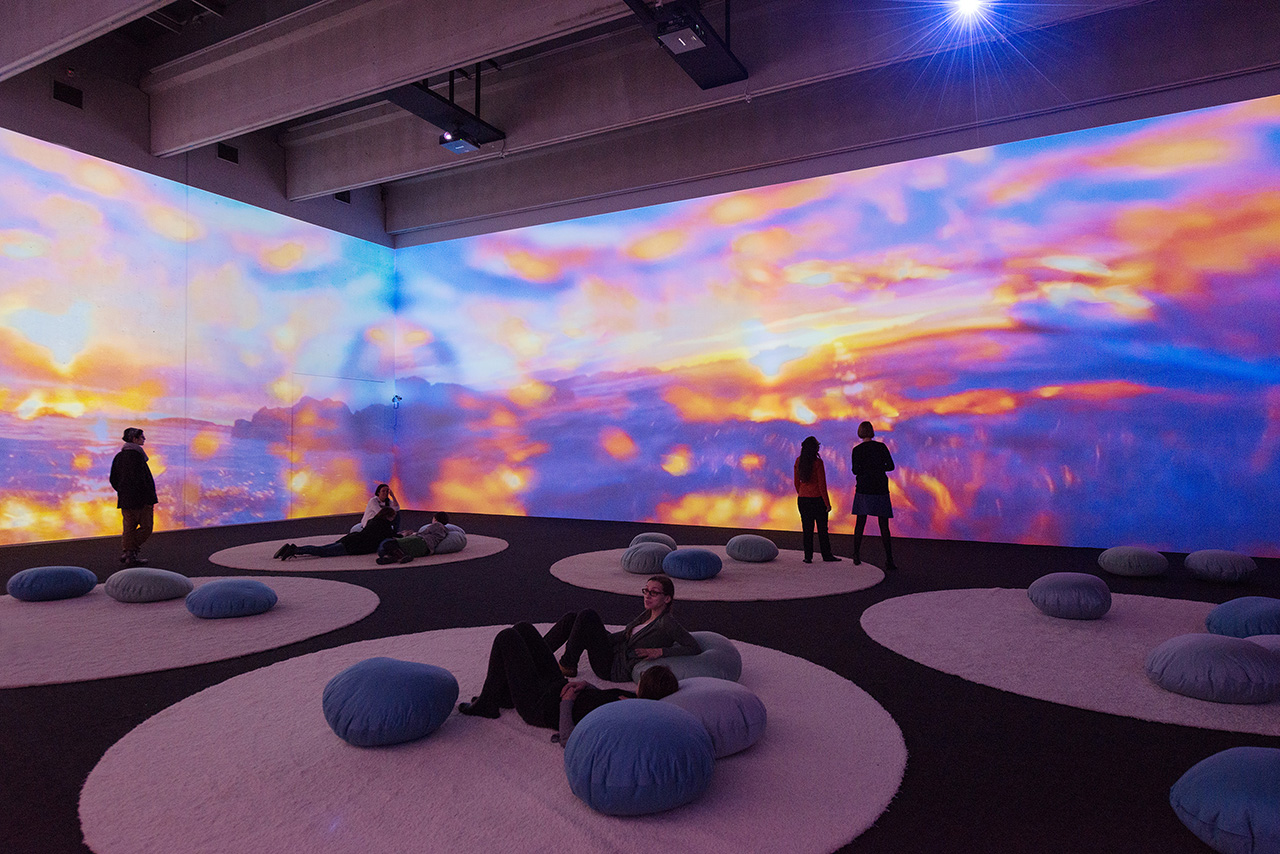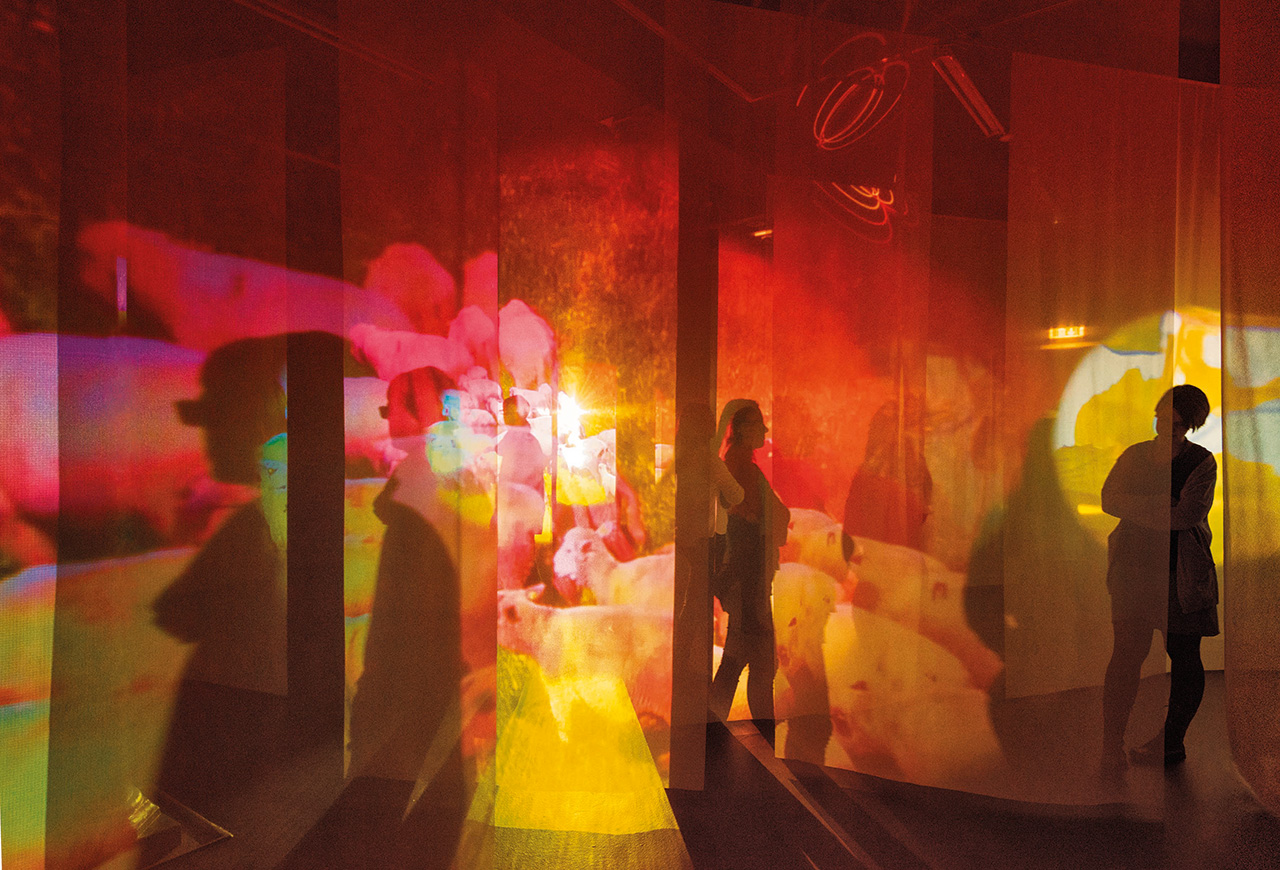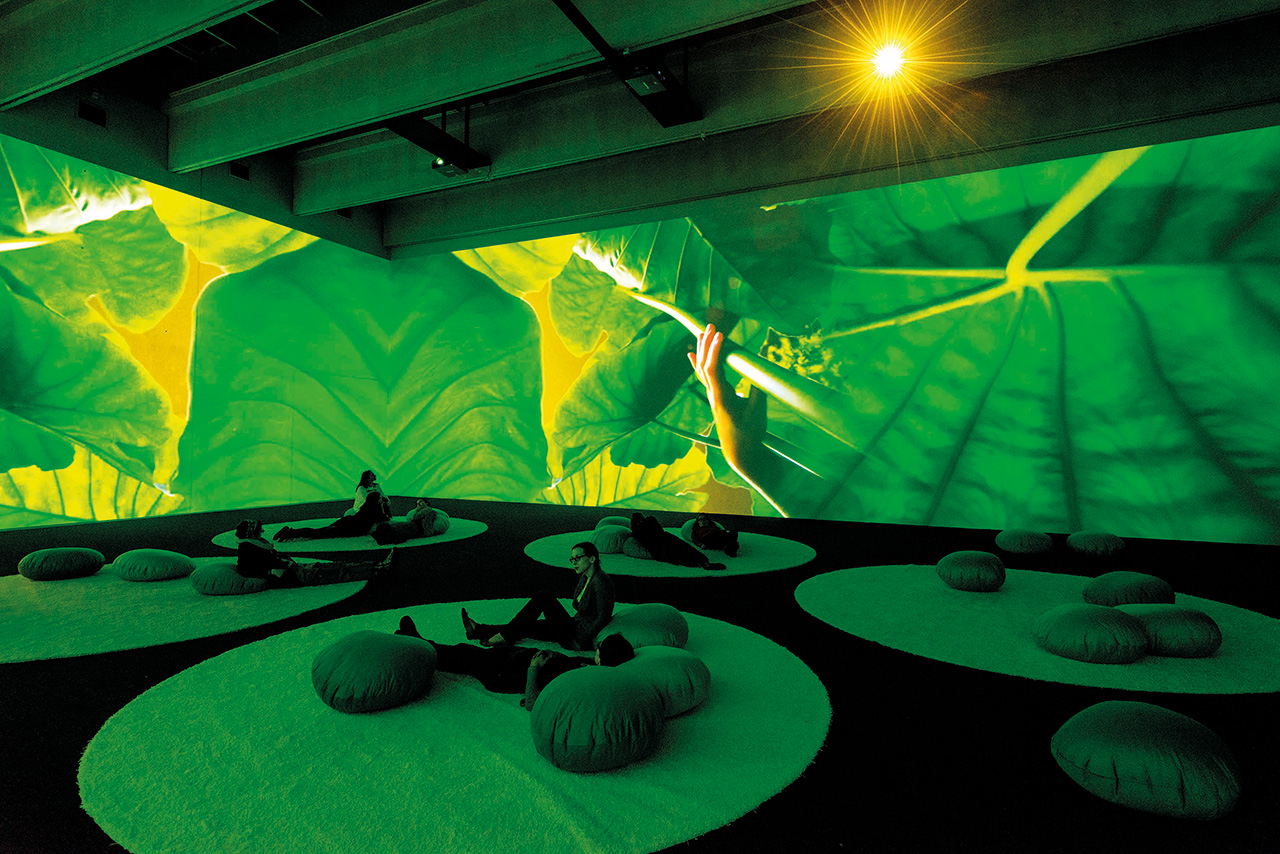News feed
Perhaps you’ve seen this video: a woman saunters down a street lined with parked cars, a baton passing freely between her hands with gleeful abandon. The woman is wearing beautiful shoes, and a vividly coloured dress that billows in the wind. She’s beaming; it’s almost like she’s intoxicated by her own, seemingly newfound, power. The music that accompanies the woman on her stroll meanders in a similar fashion, dancing a slow-motion waltz that’s interrupted only once the woman blithely swings her bludgeon into the passenger-windows of a nearby car, the first of many to feel the force of her freedom.
The video is the work of Pipilotti Rist, a Swiss video artist whose work Beyoncé liberally drew on for the creation of the Jonas Åkerlund-directed video for her Lemonade kiss-off single, Hold Up. In Rist’s original 1997 video, titled Ever is Over All, a young woman dressed in the manner of Dorothy from The Wizard of Oz brandishes what at first appears to be a red hot poker flower – a suggestion that’s compounded by the piece’s second channel video of a field of blooms, which screens on an adjoining wall – that’s quickly revealed to be made of metal as it’s gleefully thrust through the windows of parked cars. Unlike Beyoncé’s cast of bemused onlookers, Rist’s woman goes about her business undisturbed, given only the blessing of a policewoman passing by before continuing onward. It’s an ebullient, almost liberating, sight to behold.
Rist created the original work for the 47th Venice Biennale, and while stills of the video will no doubt be familiar to viewers of the original and its reinterpretation, seeing it in its two-channel format as the artist intended activates the viewer in an entirely different mode. Rist, for what it’s worth, doesn’t appear phased by the superstar musician’s homage, and instead seems more invested in what you, the viewer, takes away from the experience of having first seen the work in a secondary format before seeing it brought to life in situ.
“It was news to me,” Rist says, laughing at what must now seem like the inevitable invocation of Knowles’s homage. “I tried to treat it as an homage but I like your saying that it’s a different thing to see it fixed on still images and then really experiencing it. Beyoncé probably did not know but somebody who wrote [it did know]. I was once [told], ‘But Australians have already seen these pictures online’ – but we need to experience it in the room. It’s a different thing, so that gives me courage to [continue] the installing, the pixel mapping.” Rist’s work – the installing, the pixel mapping, and much more – has been instrumental in guiding video as an artistic medium out of the woods and into major institutions, like New York’s New Museum and Sydney’s Museum of Contemporary Art, where this week a major survey of her videos, installations and sculptures opens as part of the institution’s ongoing Sydney International Art Series exhibitions. Pipilotti Rist: Sip my Ocean encompasses three decades of Rist’s practice beginning with early single-channel videos created during the mid-1980s, including the first work she ever made, I’m not the girl who misses much, from 1986. In that largely black-and-white video, a young Rist, wearing a low-cut dress, manically performs a sped-up rendition of the first verse of The Beatles’ Happiness is a warm gun at a frequency far removed from regular patterns of speech and cut through with static.
Before Rist came to video, she attended the University of Applied Arts in Vienna, which gave her an entrée to that city’s local music scene. There, she performed in a band with friends and created for them the kind of immersive performance environments that have become synonymous with her work with today; it was, she says, “A time of slides and Super 8.” Later she moved to Basel’s School of Design, which gave her access to editing suites and introduced her to new technologies for creating her videos, including the critically-acclaimed I’m not the girl who misses much. Much of her work from that period relied on the artist’s own body and the rudimentary tools of early video. Later, Rist would transcend the monitor for the projection-based pieces she created in the early 90s once the technology had become available and ideas of expressionism, feminism and the body came to the fore in popular culture. The most successful work to have made that leap from the screen to the wall is the euphoric Ever is Over All, arguably her most famous work. Prior to that there was Sip my Ocean (1996), a similarly rapturous piece in which the artist and her camera float above a reef, swatting away the flotsam of the artist’s everyday life – crafted love hearts, televisions – as it falls to the bottom of the ocean. It’s also considered one of the first works where Rist explores the elemental environments that have become something of a signature. For that reason, it’s the work that lends its title to that of the exhibition, acting as a précis that encapsulates the themes within: the natural world, the personal, and the universal. It’s also more than a little bit sensual.
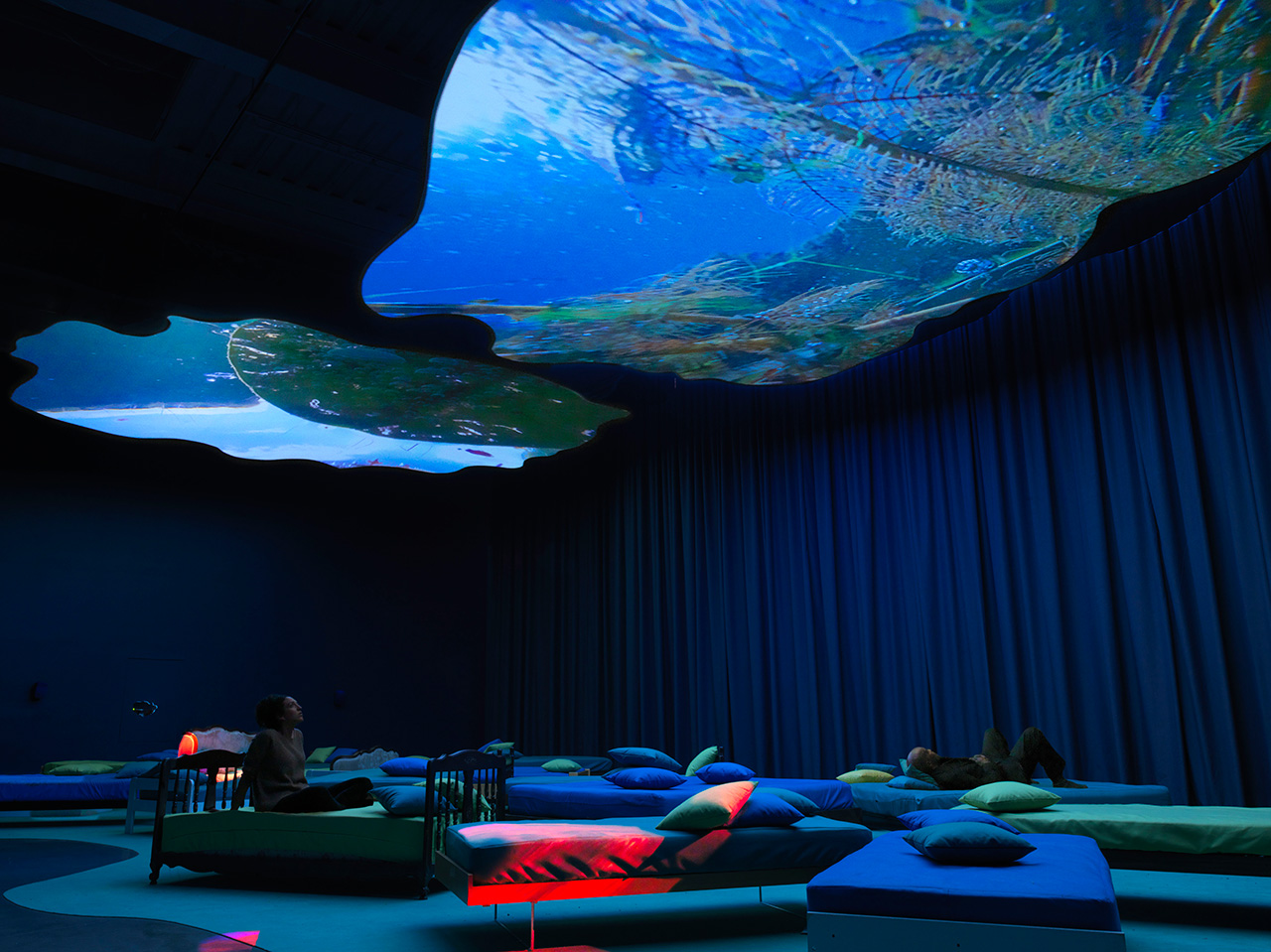
While the exhibition showcases how Rist’s work has evolved over time, it’s not a survey that has been curated in a strictly chronological fashion. While it does begin with an introduction to her early works in Das Zimmer (The Room), where the communal experience of watching television is made surreal thanks to the monumental scale of the furniture, the remainder of the exhibition opens outward in a way that defies easy categorisation, narrative and chronology – a structure, or lack thereof, befitting Rist’s work. The experience is the product of a collaboration between Rist and MCA senior curator Natasha Bullock, who, since first visiting Zurich last year to meet with Rist, has maintained near daily contact with her in the nearly two years it has taken to put the show together.
“It’s a very complex exhibition,” says Bullock. “Video is not simply a projection on a wall, it’s a lot more complicated than that. Her work is really sculptural too.” In recent years, Rist has been creating immersive, panoramic room environments that invite viewers to lie on the floor and become subsumed in the experience of viewing, as developments in technology have enabled the artist and her team to expand her practice even further. “All of them are about how we exist in the universe, and how there isn’t really a distinction between the surface of our skin and the world that we’re in,” says Bullock. It’s a thesis embodied most keenly in works like A la belle étoile (Under The Sky), a piece projected onto the gallery floor in which Rist’s camera plunges plunges into the mouth of her character before exploding into atoms. Walking throughout each of the carefully fashioned spaces, it becomes apparent that the landscape within which Rist is most comfortable is one in which nature, the terrain of the body and technology are conflated and embraced without discrimination. “It’s not a cynical appropriate of the medium,” says Bullock. “It’s a wholesale celebration and utilisation of what technology can achieve to create art.”
In another major work, Rist’s interest in female hysteria as a survival tactic and not a pejorative is resurfaced – to Rist, the sensation of falling to pieces is one deserving of celebration. The piece 4th Floor to mildness, a work originally intended to be titled Monet’s Lilies, exists today as a reference to the site of its original staging on the fourth floor of Manhattan’s New Museum, where last year a similar retrospective, Pixel Forest, was staged to critical acclaim. It’s sure to be one of this new exhibition’s most popular works: a large space populated by beds and two ceiling-mounted screens shaped to resemble lily pads. The video itself has been shot underwater; dirt hits the surface of the camera, floating through the soil and upward toward the disintegrating lilies. Rist’s camera positions the viewer on a molecular level, as though they too are adrift in the water; it’s the embodiment of a reversion to our natural state, the one to which we will return, that sees us as little more than dirt, atoms and water. Clouds of pink dye resembling blood and dismembered body parts are added into the disorienting mix. A soundtrack courtesy of the Austrian musician Anja Plaschg, who performs under her moniker Soap&Skin, amplifies the uncharacteristically maudlin mood of the piece. “When I was a child,” she intones repeatedly, almost as though she is in pain. “Please help me.”
It’s a refrain echoed by Rist in another earlier work, Selbstlos im Lavabad (Selfless In The Bath of Lava), that takes the form of a screen no larger than an apricot (a fruit with which the video shares a hue) that is inlaid into the floor of a much larger installation that has been styled in the fashion of a domestic apartment, titled Your room opposite the Opera. It’s the kind of work that Rist says she enjoys seeing in a retrospective context for what it reveals about the growth of the artist alongside those technologies that she has always embraced and employed to convey her messages. “For me, it’s always a good moment to see which works survive and which don’t”, she says, throwing her head back with a sudden burst of laughter. “Also, a new generation is here that has a completely new connotations. For example, we never had small [handheld] devices. The work in the floor (Selfless In The Bath of Lava) was quite special twenty years ago as nobody had used small monitors. Today, with the size of [handheld devices], it has different new meanings and I’m interested to see how works change in the perception of different generations.” The work itself is a miniaturised depiction of fiery purgatory – the artist staring upward at the viewer, imploring, in multiple languages, them to “Help [her]. I am a worm and you are a flower. Help me.”
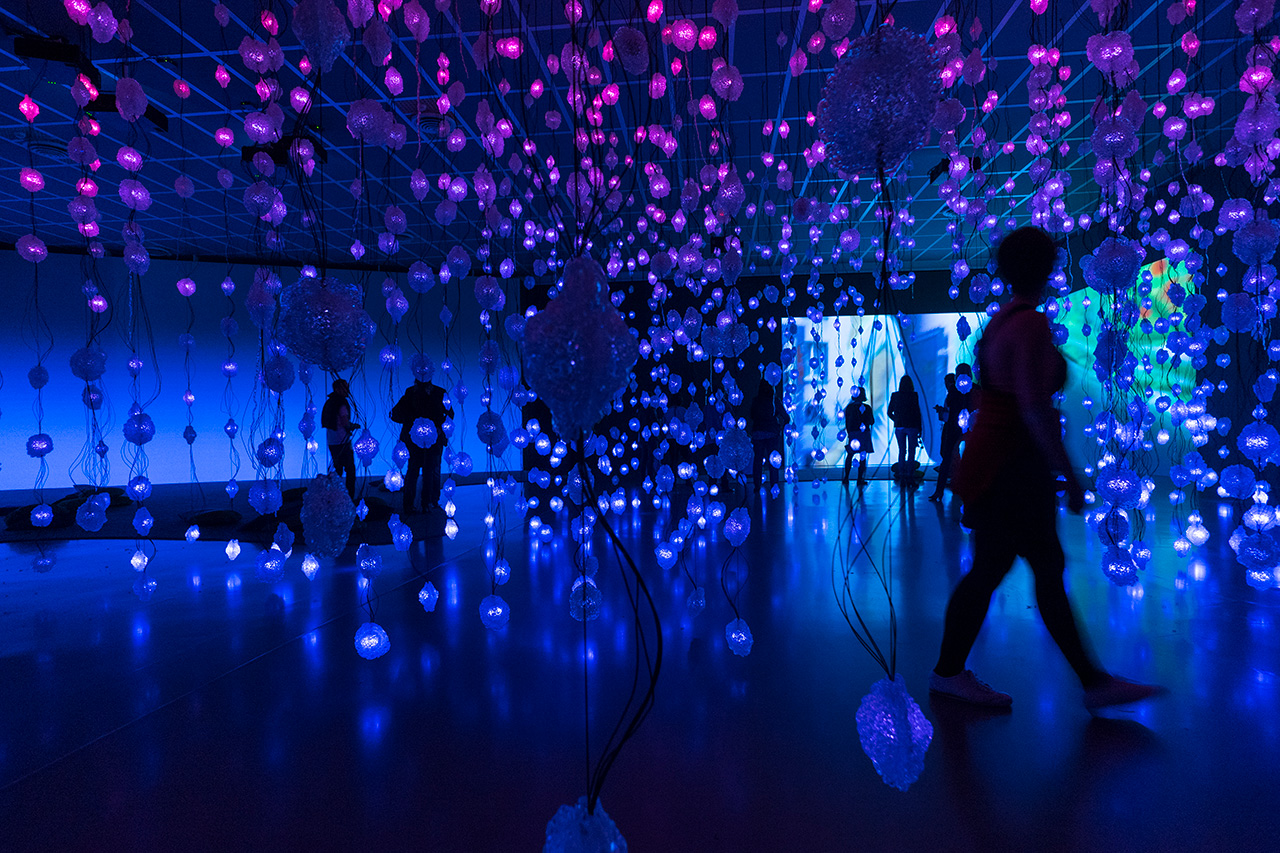
Rist tells me that her next works will explore the limits of virtual reality technology, questioning the validity of and distinction between the lived and simulated experience. “What is the difference between a flat encounter, a room encounter and a virtual reality encounter, which is also flat but is the illusion of something in between?” Rist asks, gesturing to the intricately staged apartment scene around her, where projections of varying scales are interspersed amongst domestic objects chosen for their emotional qualities. “That’s a really crucial topic we have to deal [with] as humans now.”
One of the most remarkable works in Sip my Ocean, and surely the one that will be photographed and thus performed time and time again on handheld devices as the exhibition plays out over the coming four months, is Pixelwald Motherboard (Pixel Forest Mutterplatte). Rist describes it thusly: “Pixel Forest was a humorous reaction to VR. [Virtual Reality] pretends to [be] a room but it’s an illusion. [We] literally take the pieces of the screen and we hang them in a room in a very rough, raw resolution.” Comprised of 3,000 LED globes suspended at varying heights in a cavernous gallery space, Pixel Forest is the final point of an abstraction of another moving image that is projected in the adjacent apartment. The pixels in that image have been broken down to a molecular level and exist now as globes suspended in space. Rist had her team colour correct, blur and slow the original image down to reduce the visual assault that otherwise would have been presented using what she describes as “thousands of Excel sheets [so] even if it looks irregular, they know exactly where they are.” Bullock likened the desired effect to “a television exploding into space,” with every single globe operating on its own video sequence. It is a dazzling, disorienting and at times majestic experience to walk through the forest of pixels and to know that you are being dwarfed by the light and colour of an image that has been abstracted to the point of oblivion.
On the other side of the wall, two early works – Sip my Ocean and Ever is Over All – play on a loop. The former is soundtracked by an unnerving cover, performed by Rist, of Chris Isaac’s Wicked Games; the latter soundtrack is punctuated by both lilting music and the shattering of glass. Each time Rist breaks a window with her red hot poker, the Pixel Forest shimmers with new light, artist and image dancing together in real time.
Pipilotti Rist: Sip my Ocean will exhibit at the Museum of Contemporary Art, Sydney, from November 1 until February 18. More information is available here.
Tile image: Pipilotti Rist, Ever Is Over All (still), 1997, single channel projectors, players, sound system, paint, carpet, courtesy the artist, Hauser & Wirth and Luhring Augustine © the artist
Cover image: Pipilotti Rist, Selbstlos im Lavabad (Selfless In The Bath of Lava) (still), 1994, single-channel video installation, sound, colour, LCD screen set into the floor, player, courtesy the artist, Hauser & Wirth and Luhring Augustine © Pipilotti Rist





